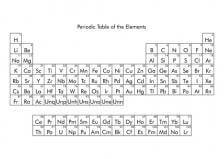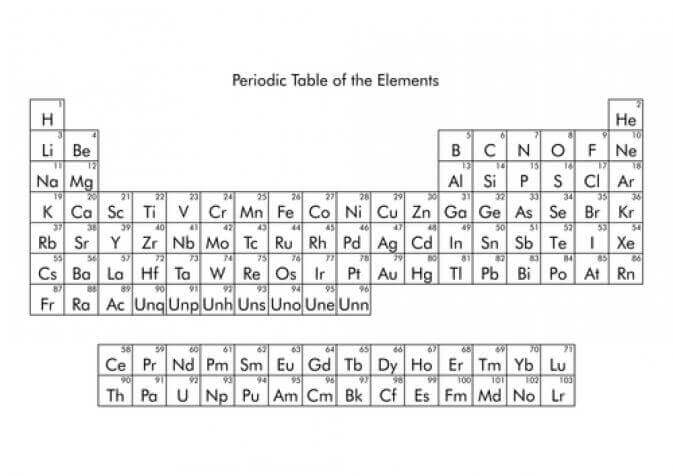A Tour of the Periodic Table (Part 1)
Ask Science explores the periodic table of the elements in Part 1 of this series.
Lee Falin, PhD
Listen
A Tour of the Periodic Table (Part 1)

It seems like every science textbook I’ve ever owned has had one thing in common. Somewhere in the book, usually tucked away in the secret back pages of arcane reference material, is a copy of the periodic table, more formally known as the periodic table of elements. In the next few episodes we’re going to look at this table in depth.
Sponsor: Try GotoMeeting with HDFaces Today Free for 30 Days!
What Is the Periodic Table?
The periodic table is made up of several squares arranged into columns (called groups) and rows (called periods), with each square representing one chemical element. The groups and periods have specific properties that we’ll discuss in a future episode, but today I want to talk about the information inside each square.
In most textbooks, the largest symbol in each square is the chemical or atomic symbol. Elements with permanent names have symbols that are one or two letters long (such as H for hydrogen or Se for selenium), while relatively new or theoretical elements have three letter designations (such as Uuo for Ununoctium). You might notice that some chemical symbols seem a bit odd. For example why is lead’s symbol Pb? Shouldn’t that be the symbol for the peanut butter element?

But there is reason for these inconsistencies. Some elemental symbols come from the words used to describe those elements in other languages. Since the Latin word for lead is plumbum, it gets a symbol of Pb. Similarly, aurum is the Latin word for gold, which explains its chemical symbol of Au. Tungsten has a symbol of W, which comes from its German name, wolfram.
I’ve Got Your Number
The next most prominent thing in the element square is the atomic number. As I mentioned in my episode What Are Atoms?, the atomic number tells you how many protons a specific element has. A hydrogen atom will always have one proton, while a helium atom will always have two protons, and so on.
While almost every version of the periodic table will have chemical symbols and atomic numbers, the rest of the information packed into each square will vary somewhat depending on who printed the table. Let’s see what is the most common extra information you’re likely to see and how to identify it.
Weighing in on Isotopes
The next most common item you’re likely to see in each square is the atomic weight of the element. The atomic weight of an element is the abundance-weighted average of the atomic masses of the most common isotopes for that element. How’s that for confusing? Let’s break that statement down a bit using chlorine as an example.
Every chlorine atom has 17 protons. Each of these protons weighs around one atomic mass unit, or 1u for short. You might remember from my episode What Are Atoms? that atoms with the same number of protons but differing numbers of neutrons are referred to as isotopes. Most chlorine atoms (around 75.78%) have 18 neutrons. The majority of the rest (around 24.22%) have 20 neutrons.
Chlorine atoms with 18 neutrons have an atomic mass of around 34.97u, while those with 20 neutrons have an atomic mass of around 36.97u. To calculate the atomic weight, we just need to figure out the abundance-weighted average, that is the average of the atomic masses of each isotope, taking into account how abundant each of those isotopes are.
So we have (34.97u * 75.78%) + (36.97u * 24.22%) = 35.45u
Therefore the atomic weight of chlorine is 35.45 atomic mass units. Sometimes you’ll see the atomic weight of an element in parentheses. This is usually because there are no known stable isotopes of that element, so the mass of the isotope with the longest half-life is used as an approximation.
One last item you might find in each square of the periodic table is a list of the number of electrons that element would normally have in each of its electron shells, a topic I’ll discuss at more length in a later episode of this series.
Conclusion
So there you have it, part one of our tour of the periodic table of elements. Next time we’ll look at the groups each set of elements is arranged into.
While you’re waiting for next week’s episode, you can bide your time with the Tom Lehrer’s world-famous “The Elements” song, there’s even a Daniel Radcliffe version, as well as a super-cute version sung by a 3-year-old.
If you liked today’s episode, you can become a fan of Ask Science on Facebook or follow me on Twitter. If you have a question that you’d like to see on a future episode, send me an email at everydayeinstein@quickanddirtytips.com
Periodic Table image from Shutterstock

